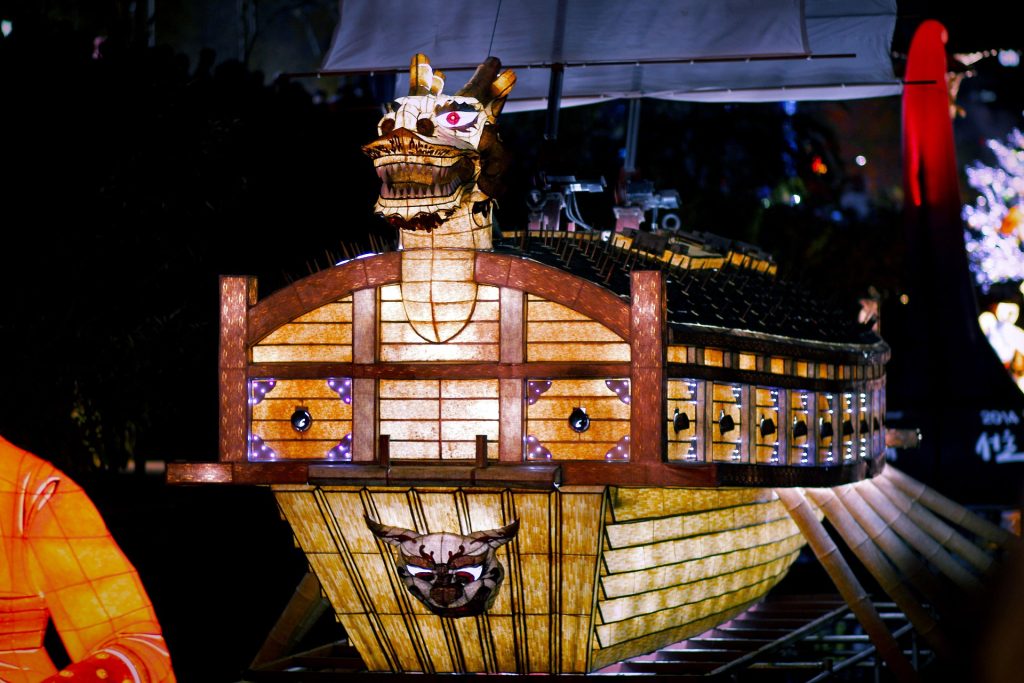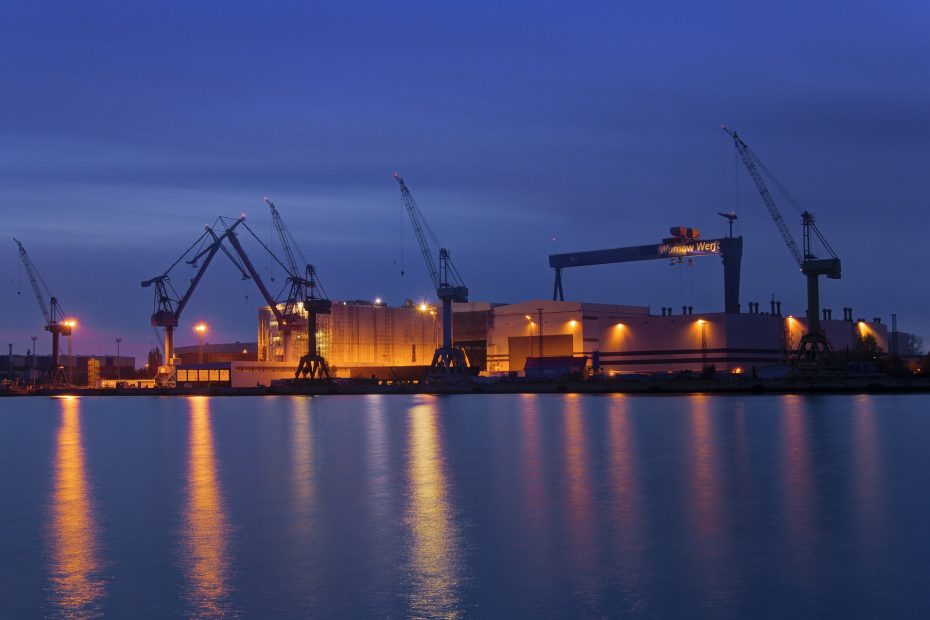Contents
- 1 Who was Jeong Ju Young?
- 2 The situation in Korea when Chairman Jeong Ju-young tried to start the shipbuilding industry
- 3 Attracting Investment with a Photo of the White Sand Beach
- 4 From wasteland to creating the world’s No. 1 shipbuilding country
- 5 The Significance of Chairman Jeong Ju-young’s Challenge in Korean History
Who was Jeong Ju Young?
Jeong Ju-Young, widely known as the founder of Hyundai Group, is a visionary and trailblazing entrepreneur hailing from South Korea. Born in 1924, he embarked on an extraordinary journey that would reshape the global industrial landscape.
Jeong Ju-Young’s indomitable spirit led him to revolutionize the shipbuilding industry in the 20th century. As the pioneer of Hyundai Heavy Industries, he transformed a modest shipyard into a dynamic force, capturing the world’s attention with innovation, precision, and an unwavering commitment to quality.
Beyond shipbuilding, Jeong Ju-Young’s influence extended across diverse sectors. His entrepreneurial prowess propelled Hyundai into automobiles, construction, and more, solidifying its status as a global conglomerate. This visionary leader’s tenacity and foresight also fostered South Korea’s economic growth and bolstered its global reputation.
Jeong Ju-Young’s legacy is characterized by his relentless pursuit of excellence and his unwavering belief in the power of innovation. His impact transcends borders, standing as a testament to the potential of individual brilliance to drive transformative change on both a national and international scale. Today, his legacy continues to inspire future generations of entrepreneurs and business leaders worldwide.
https://www.hshi.co.kr/eng/PageLink.do?link=about/founder
The situation in Korea when Chairman Jeong Ju-young tried to start the shipbuilding industry
When Chairman Jeong Ju-Young embarked on founding Hyundai Heavy Industries, the economic landscape of South Korea was vastly different from its current prosperity. It was a time when South Korea was not as affluent as it is today. The country was still in the process of recovering from the ravages of war and laying the groundwork for its economic transformation.
In the early stages of Hyundai Heavy Industries’ establishment in the late 1960s, South Korea faced significant challenges, including limited resources and a fragile industrial base. The nation was focused on rebuilding its infrastructure and nurturing key industries to fuel its development. At that juncture, Chairman Jeong’s audacious vision to create a world-class shipbuilding company was met with skepticism.
If you want to take a quick look at Korea’s modern and contemporary development history, please refer to the article on the link below. Unlike other countries, Korea has achieved very rapid growth since 1950.
Attracting Investment with a Photo of the White Sand Beach
In the absence of a shipyard, Chairman Jeong Ju-young won a ship order and borrowed a loan from the UK to build a shipyard and build a ship at the same time.
Jeong only confirmed the site of the shipyard in Ulsan in 1971 and went to Britain to secure huge foreign capital. He asked Barclay Bank, then Britain’s top bank, to introduce a $43 million loan. The introduction of loans from foreign countries was a major problem that determined the success or failure of shipyard construction. However, Barclay rejected Hyundai’s offer due to lack of shipbuilding capabilities and technology.
Jeong, who failed to persuade Barclay Bank directly, visited Charles Longbottom, chairman of A&P Appledoor, a ship consultant company, as a person who can influence Buckleay Bank. He tried to move Barclay Bank through Charles Longbattom. However, he doubted Hyundai’s ability to repay loans and was negative about its growth potential.
For Charles Longbattom, who is shaking his head, Jeong searched his wallet and took out a 500 won bill with a picture of a turtle ship. “Korea built an ironclad ship in the 16th century,” Jeong said, referring to the turtle ship depicted on the bill. It is as early as 300 years before England. He persuaded Chairman Longbattom, saying, “The idea has rusted due to the late industrialization, but once it starts, the potential will be unleashed.”

In response to Jeong’s explanation and persistent persuasion, Longbattom toured Hyundai Engineering & Construction and handed it to Barclay Bank by writing a recommendation that Hyundai could build a large shipyard and build its own competitive ship. Of course, Hyundai’s loan application has passed through Barclay Bank.
Hyundai decided to receive a loan from Buckleay Bank, but had to overcome the bigger mountain of approval from the UK Export Credit Guarantee Agency (ECGD). In the UK, even if a bank decided to provide a loan, it had to obtain approval from the ECGD, which was a system in which the British government took responsibility and compensated if the country that took the loan failed to repay the principal and interest. Because of this, the ECGD’s standards were very strict.
Hyundai has been recognized by the ECGD for its shipyard construction plan and ability to repay principal and interest, but has been informed that it can only be approved if it has a clear proof that it has someone to purchase the ship. Jeong immediately sought out the shipowner. However, all he could show the shipowner was a photo of the white sand beach in Mipo Bay, Ulsan, a map of 50,000th, and a drawing of a 260,000-ton tanker made by Scotrisgo.
Chairman Jeong went to sell ships that he didn’t have and didn’t make in a shipyard. The shipowners’ reaction was cold. While agonizing over the ship order issue, Chairman Jeong gets information from a ship broker introduced by Chairman Longbattom that George Livanos, chairman of Sun Enterprise in Greece, is looking for a cheap ship. This is because the main ship was aging and competitiveness had to be secured with cheaper ships due to the pursuit of competitors.
Chairman Jeong flew to a villa in Mont Blanc, Switzerland, where chairman Livanos was staying, and the contract was signed on the spot. Chairman Livanos admired Chairman Jeong’s pioneering spirit and will, and ordered two large oil tankers without hesitation. With the success of the ship order, Hyundai Heavy Industries was able to obtain approval from the ECGD and the construction of the shipyard entered a full-fledged stage.
Later, in a condolence message sent to Hyundai Heavy Industries shortly after Jeong’s death, Chairman Livanos said, “When I first met the deceased, I felt that he was not an ordinary person. When I saw the deceased, I was confident that there would be no problem ordering an oil tanker,” he recalled.
From wasteland to creating the world’s No. 1 shipbuilding country
The saga of South Korea’s shipbuilding industry, led by Hyundai Heavy Industries, is a riveting tale of ambition, innovation, and resolute determination that culminated in global dominance.
Emerging from the shadows of underdevelopment, South Korea embarked on a remarkable journey in the shipbuilding arena. In the late 20th century, Hyundai Heavy Industries emerged as the vanguard, poised to reshape the maritime landscape. Chairman Jeong Ju-Young’s bold vision guided this transformation, setting the stage for a paradigm shift.
Through strategic collaborations and technology acquisitions, Hyundai rapidly fortified its shipbuilding capabilities. The 1970s and 1980s marked an era of unprecedented growth, fueled by cutting-edge engineering, efficient production techniques, and a relentless commitment to quality. These elements converged to create a perfect storm, propelling Hyundai and South Korea into the global shipbuilding echelon.
As orders poured in, Hyundai Heavy Industries took the lead, capitalizing on its skilled workforce and an intricate web of suppliers. By the 1990s, South Korea had dethroned Japan, long the titan of shipbuilding. This meteoric rise underscored South Korea’s adeptness at turning adversity into opportunity, setting new industry benchmarks.
The triumphant ascent to world supremacy was no fluke. South Korea’s shipbuilders, guided by unrelenting innovation and an unyielding pursuit of excellence, consistently outperformed competitors. The nation’s shipyards became synonymous with cutting-edge technology and unrivaled efficiency, securing their place at the forefront of global shipbuilding.
This odyssey epitomizes South Korea’s transformative power and resilience, showcasing how strategic vision, technical prowess, and unwavering determination can elevate an industry and a nation. From a fledgling endeavor led by Hyundai Heavy Industries to becoming the unrivaled leader in shipbuilding, South Korea’s shipbuilding epic is a testament to the boundless potential of human ingenuity and collective will.
The Significance of Chairman Jeong Ju-young’s Challenge in Korean History
In the annals of industrial history, Chairman Jeong Ju-Young’s life story stands as an inspiring testament to entrepreneurial brilliance. Imagine this: a visionary leader who transformed a fledgling Korean shipyard into a global powerhouse, even before the sparks of modernity had fully ignited.
Picture this captivating scene: Chairman Jung, armed with unwavering determination, daringly sought investment from European magnates for a struggling Chosun Shipyard. Against all odds, he secured their support, a pivotal move that would lay the foundation for the Hyundai conglomerate’s astonishing rise.
As the Hyundai saga unfolded, Chairman Jung’s audacious spirit didn’t merely revive a shipyard; it ignited a flame that would illuminate a new era for South Korea. Through innovation, resilience, and an unwavering commitment to excellence, he propelled Hyundai into diverse sectors, shaping it into an economic force to be reckoned with.
Chairman Jung Joo-young’s legacy extends beyond business acumen. It embodies the very essence of perseverance, determination, and a relentless pursuit of growth. His remarkable journey from a modest shipyard to the helm of a global empire underscores the potential of a single individual to spark transformative change that resonates far beyond the boundaries of a single industry.
